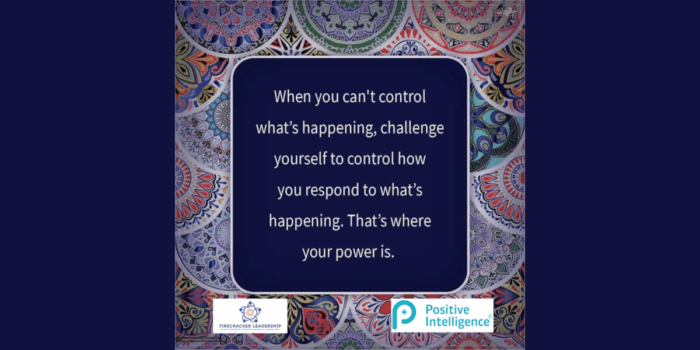I have many folks considering exits, besides setting up a successful transition, here’s something to consider about clarifying what’s next for you.
Mention the word “retirement” to a corporate executive in their 60s, and you’ll see one of two reactions: excitement about the future, or complete denial and dread.
In the latter category, much of the anxiety stems from conflicting visions of modern retirement. For many Baby Boomers at the culmination of a successful career, there’s little eagerness for endless days of golf, grandchildren, and leisure.
For others, there’s a desire to slow the pace, but not trade in the prestige, identity, and self-worth that comes from a full-time executive role. This result leaves many nearing retirement (and their employers) at an uncomfortable crossroads.
If you’re asking yourself what you’ll do next, you’re certainly not alone.
Longer lifespans and more flexible retirement ages factor into decision-making. The 20th century added 30 years to the average lifespan—now 77 years—and experts like The Stanford Center on Longevity expect that age to continue increasing. Their New Map of Life addresses the implications and opportunities of coming generations that will foreseeably reach 100 years old.
Americans age 55 and older are now the fastest-growing segment of the U.S. workforce, with their contributions to the economy expected to triple to to nearly $27 trillion over the next three decades. They’re skilled, independent, and motivated, with few ready for a complete 180 when it comes to next steps. It all results in the need to reframe “retirement” with new thinking and more possibilities.
SHARE YOUR LEADERSHIP EXPERIENCE
The good news is that thoughtful planning while you’re still employed can help you figure out a fulfilling and balanced next chapter.
Start by considering:
- What income will you need to maintain your retirement lifestyle?
- How much time do you want to devote to various activities, such as part-time work, corporate board service, volunteering, family, travel, or hobbies?
- Which causes and values are important to support in your retirement?
- What unique leadership skills and experience can you bring to your next endeavors?
- What help will you need to achieve these goals?
The ideal mix of retirement activities combines your personal passions with your leadership skills and experience, at a pace that fits your desire for work-life balance.
It can be helpful to involve a professional coach, close friend, or trusted colleague in the discovery and planning process. In some cases, savvy employers even provide access to “legacy planning” coaches who help senior leaders make the retirement transition smoothly. This support benefits the organization as well as the retiring executive, by keeping succession plans on track and clearing the way for the next generation of leaders to advance.
As you’re planning your retirement chapter, there’s no need to shelve your professional life entirely. Consider these ways to share your leadership experience and add value to your days.
JOIN A BOARD
Corporate board service with a public or privately held company is a great capstone in a leadership journey. Expect to commit about 300 hours per year to meetings, committee work, and other advisory activities. Start tapping your professional network 18 to 24 months before you leave your full-time job, in order to find the right board role.
LEAD A NON-PROFIT
When you’re passionate about a cause, a full or part-time role at a 501(c)3 organization channels your leadership abilities in a different direction, while simultaneously making a positive impact in your community. Consider how your skills intersect with a specific non-profit’s mission, then tailor your résumé and LinkedIn profile to support your goal.
TEACH, WRITE, OR SPEAK
A corporate career yields a deep base of knowledge. Once you find your voice, there are a number of ways to share your point of view in paid or volunteer engagements. Take time to write the next business bestseller, speak to trade associations, lead community workshops, or offer your story to local schools. Developing an outline of your chosen topic and a short bio with your credentials will help open the door to opportunities.
GO FRACTIONAL
The gig economy gives executives new options for flexible work as consultants. Choose project-based work or engage two to three days per week as a fractional CXO. Entrepreneurs and small businesses in particular appreciate guidance from seasoned professionals. Be sure to research your tax and legal responsibilities as a 1099 employee before you begin.
MENTOR YOUNG PROFESSIONALS
Advising younger leaders generates new insights for both sides. Consider volunteering your time in a one-on-one mentorship with a younger professional in your field. Look for opportunities with your current employer, your professional network, through trade associations, local colleges, or even national organizations like Menttium.
BECOME A BRAND AMBASSADOR
Love your company and believe in its mission? Stay connected by offering to help with networking and recruiting. More companies now realize the value tenured executives can bring as brand ambassadors and have formal programs for alumni. Retired leaders share the company story externally and identify promising new talent. Before your exit, set up a meeting with your human resources team.
SPEND LEISURE TIME PURPOSELY
Don’t forget to balance value-added activities with fun and family. It can be tempting to say “yes” to every opportunity; instead, stick to your legacy plan. Prioritizing yourself and protecting your schedule gives you time to explore new avenues and make the most of your new situation.
A healthy and fulfilling retirement is all about balance. Find the right mix for your ideal lifestyle, and you’ll be ready to move forward with confidence and intention.



